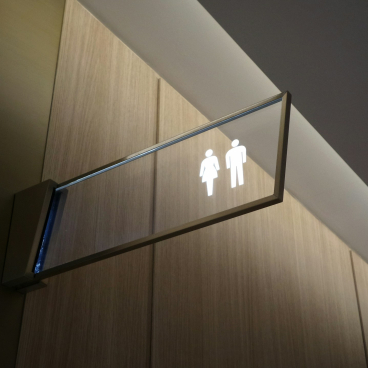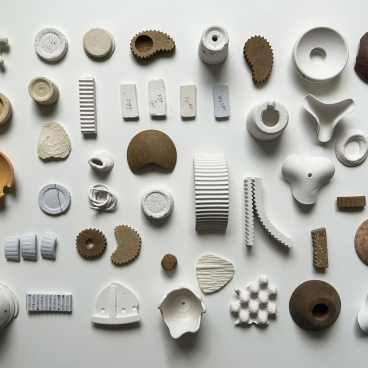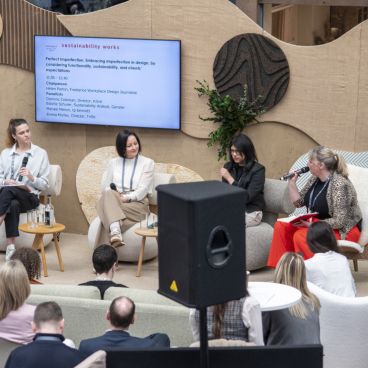Becky Spenceley, design director, Gensler, on purposeful impact, nature & neurodiversity in workplace.
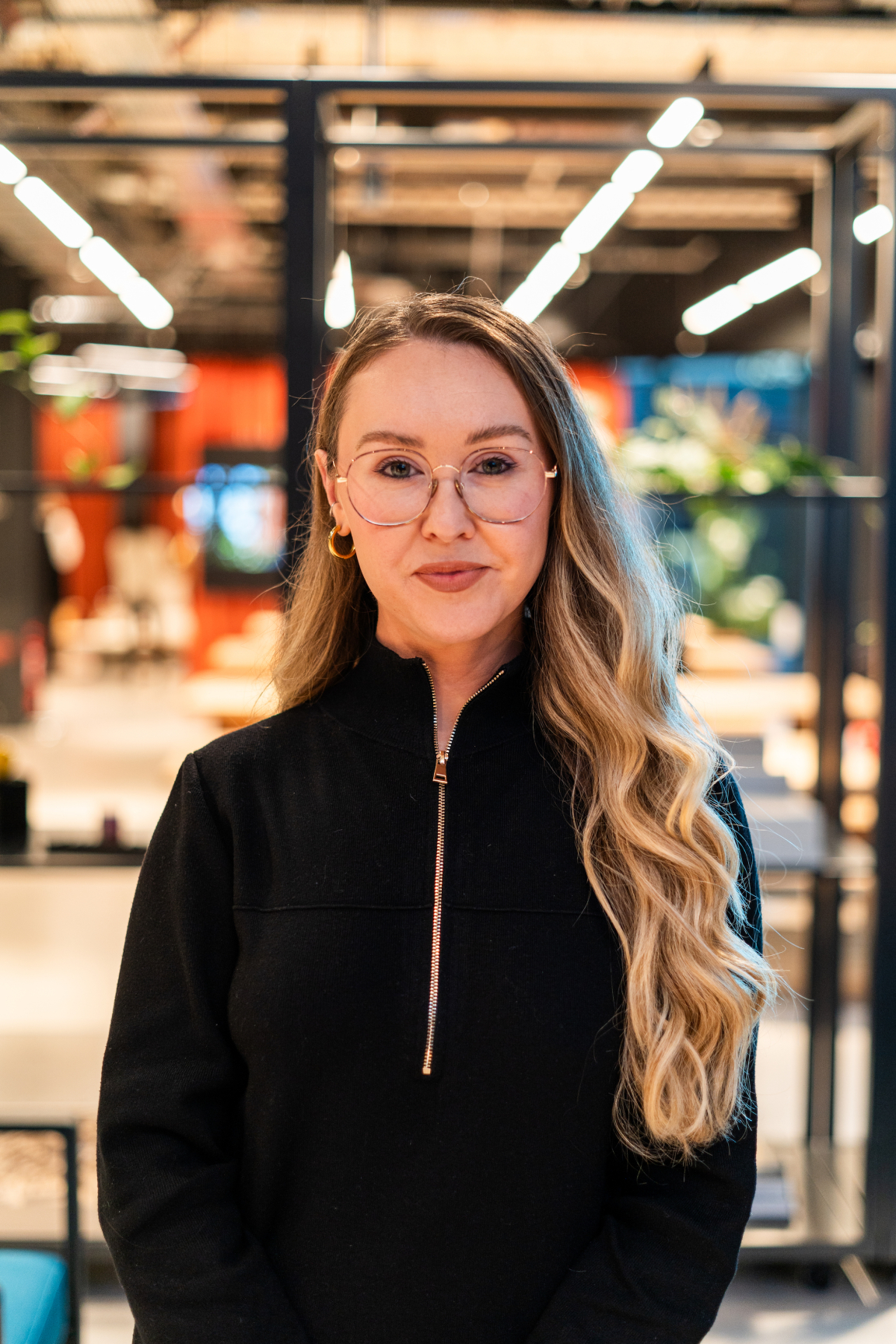
From Sunderland to the US, India to London, Becky Spenceley, design director, Gensler, has explored the world through her career.
No matter where she's based though, her drive to create world-class schemes focused on purposeful and impactful design for people has remained unwavering.
This is underpinned by a dedicated eye on neurodiversity, and a light touch when it comes to the environment, demonstrated through her embracing of biophilia, natural light, and nature-inspired materials for a varied portfolio of workplace projects.
Though as you'll see in the images, the work Becky does is highly aesthetic, she stresses the point that, first and foremost, a space must be functional.
To ensure this, she takes a science-led approach to shaping settings that are comfortable - not one-size-fits-all - but rather adaptable for all who use them. Here, we chat about a range of topics, from travel and form versus function, to brain chemistry and accreditations. Over to Becky.
Becky, give us a snapshot of your career to date
"I studied Interior Design at Northumbria University and was living in my hometown Sunderland at the time. Shortly after having done some freelance hospitality work, I landed a graduate designer role at Gensler in London and relocated to begin my career in commercial interiors. I have since had an incredible experience working with wonderfully talented people and project teams.
"I spent a couple of years living in California working on major workplace projects for clients in Silicon Valley. My projects have taken me all over the world including stints in India, New York and across Europe, but I am focusing now on design local to London creating world-class schemes focused around purposeful and impactful design for people."
You're design director at Gensler - what does your role entail?
"As a design director, I’m responsible for overseeing the overall vision, strategy and implementation of the design in our work. I work across the projects in our workplace studios, designing and leading teams and working closely with clients to ensure their voice is heard and understood and we’re able to deliver the best solutions possible for them and their people. I’m fortunate to have a role that is enriching and rewarding and I’m constantly learning something new and continue to be inspired day to day."
You recently spoke about harnessing science-backed data and research to create more human spaces - where does the data come from, and how does this inform your projects?
"One of my passions is delivering design that has meaning. I believe we can remove a lot of subjectivity when it comes to decision making by giving a strong reason as to why we are designing in a particular way. We create concepts and narratives that can help guide us in our planning layouts, material palettes, colour schemes and 3D form and massing.
"There is a lot of research and studies that indicate certain environments can positively impact wellbeing. For example, biophilic design in workplaces can lead to increased productivity, enhanced mood, and reduced stress among employees.
"Elements such as natural light, indoor plants, and nature-inspired materials contribute to this. Colour in interior spaces can significantly influence brain chemistry by affecting neurotransmitter activity, hormone production, and overall emotional states. Being around certain colours can affect the release of chemicals in the brain such as dopamine, serotonin and cortisol."
"Space first and foremost must be functional."
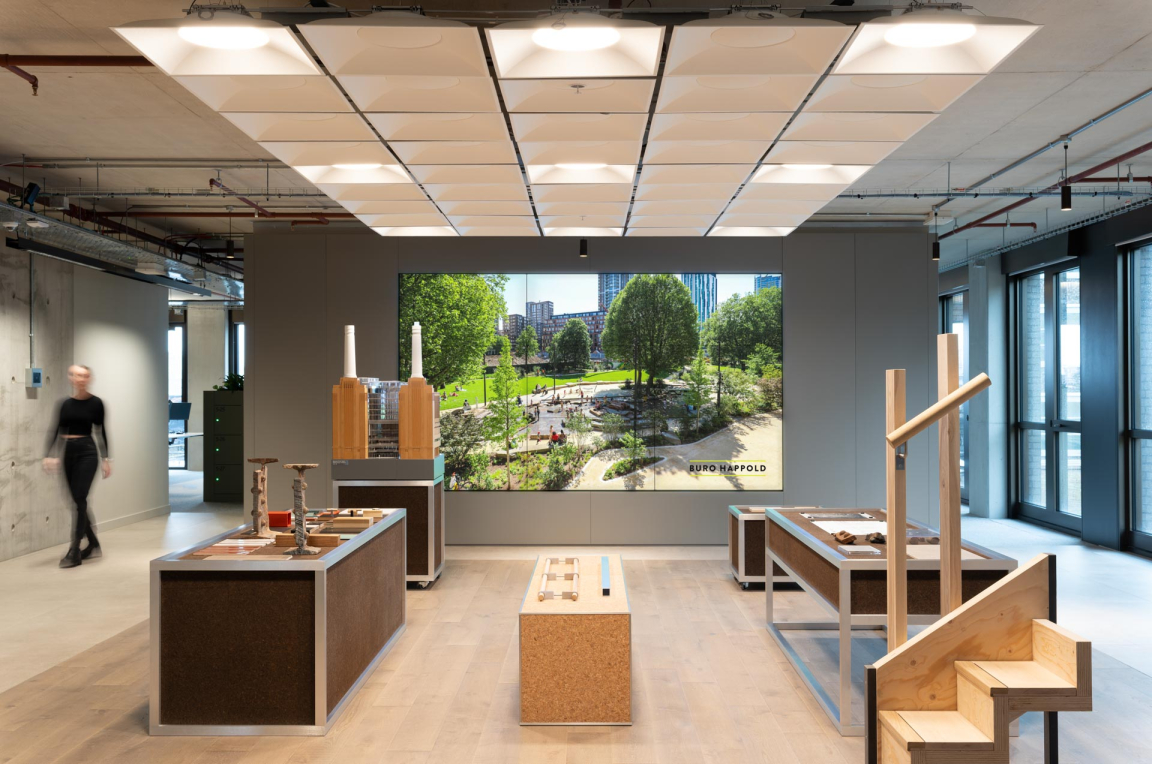
Buro Happold London. Photo: Ben Tynegate
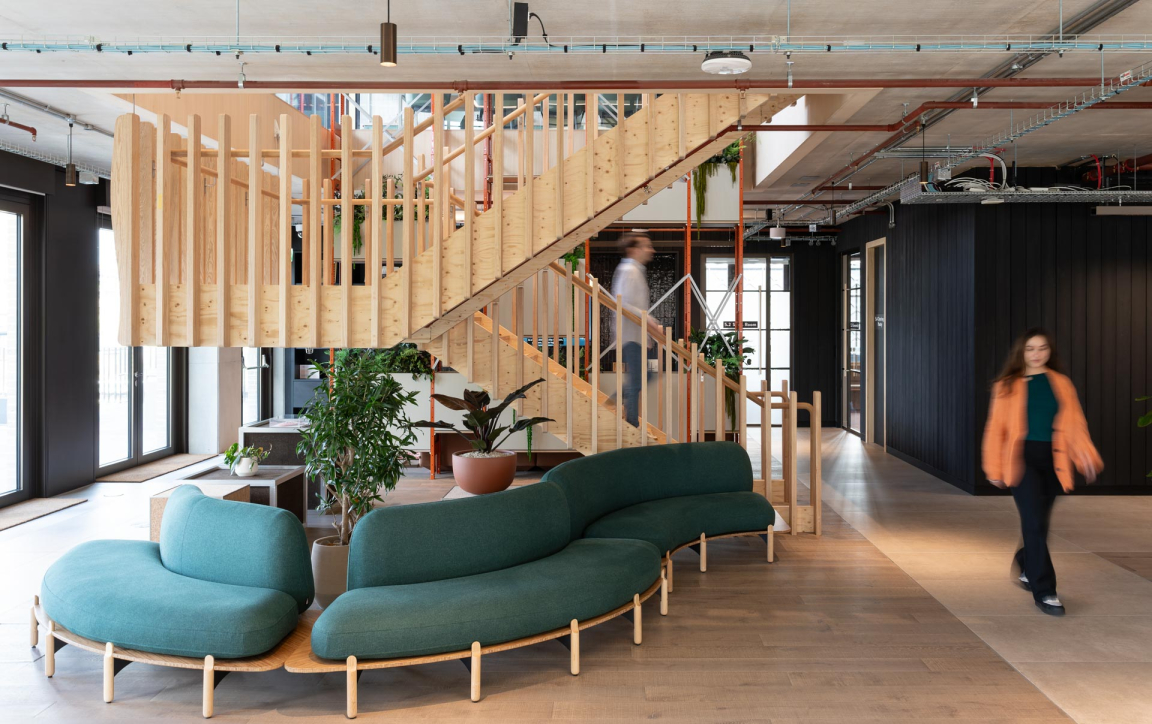
Buro Happold London. Photo: Ben Tynegate
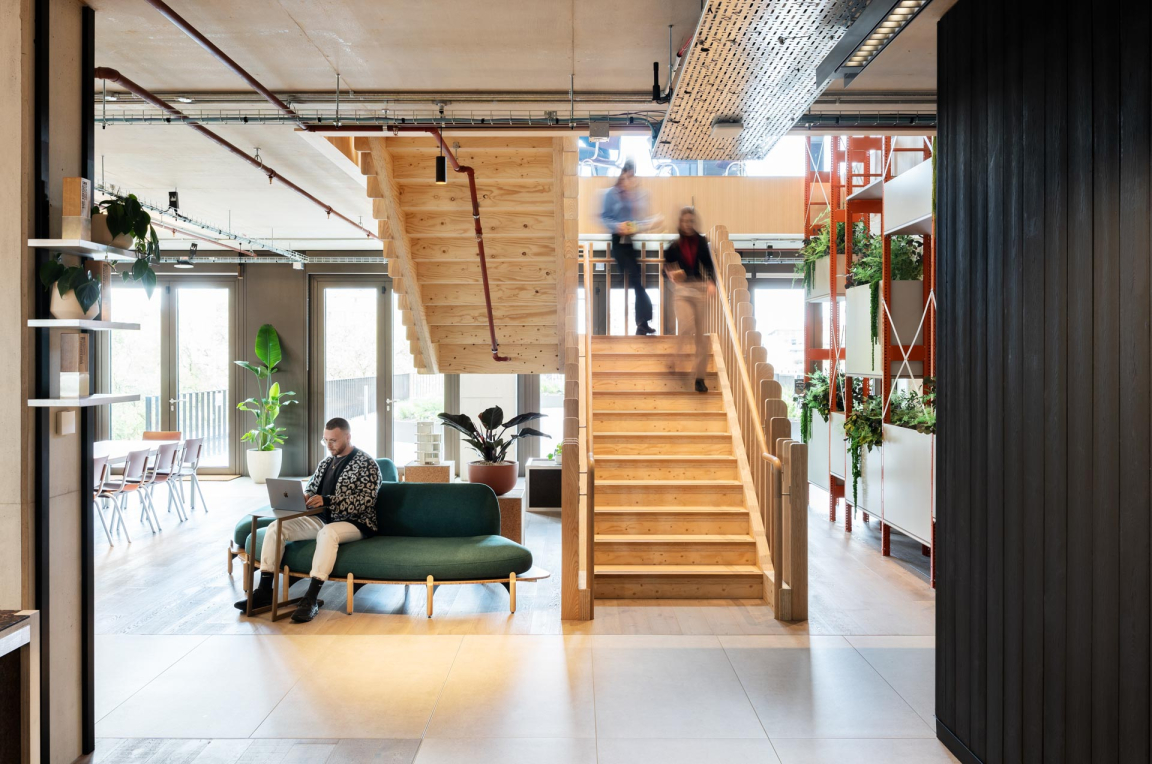
Buro Happold London. Photo: Ben Tynegate
What elements are needed to make a well-functioning, human-centric space?
"Space first and foremost must be functional. We can design beautiful spaces, but they fundamentally have to work. At Gensler we focus on creating resilient, sustainable and inclusive spaces that make people feel good.
"You need to consider every aspect from the larger overall architecture and massing of a space which affects how a person flows through it, right down to the tactile material on a door handle. Fresh air, access to daylight, seamless technology all significantly affect how well a space operates."
How does neurodiversity factor?
"I believe there is never a one-size fits all approach to design. Everyone is different and the reality is people will always want and like different things. Personal taste is real! However, we can be better designers by educating ourselves and understanding that some people have various needs that may not be obvious, and designing for neurodiversity is critical. We can help by providing greater choice and variety of space types in workspaces and our built environment.
"Some people prefer darker, quieter, less busy places, whilst others enjoy lively and brighter experiences with more hustle and bustle. They key is providing this choice. We also need to provide ways for users to flex and control their environments, such as light levels and sound so they can tailor to their own preferences."
Psychology clearly plays a fundamental role in design - has that always been the case? Or is it a new thing?
"It’s becoming more and more a focus of how we design.
"We’ve never had more knowledge and ability to cater for people’s psychological needs and preferences."
"Technology has played a big role in this. We’re able to use big data in buildings now which help us learn how spaces operate and provide better functionality for its users."
Is the drive for human spaces coming from clients? Will they invest?
"I think it’s both our clients and ourselves. As a leading design firm, we are responsible as we have such a large impact on the built environment globally. The pandemic propelled a lot of the drive for more human focused design and understanding.
"Clients will and are investing already. We’re seeing the ripple effect across the design and construction industry with consultants and contractors taking this drive onboard and holding each other accountable."
How does technology enable or hinder the creation of 'human' spaces?
"For me there are two aspects to this. Firstly, technology should be embraced as a design tool to help designers to work more seamlessly and effectively. We’re seeing a rise in embracing AI technology to rapidly iterate on design thinking and help visualise our design ideas for example, as well as BIM tools and processes.
"Secondly, technology plays a huge role in creating healthier and more sustainable buildings and interiors by utilising building data and machine learning."
With a collective emphasis on driving down carbon, how does this factor in your project work?
"It’s a baseline for us and we have several tools that we use to ensure we design sustainable spaces. We have developed the Gensler Product Sustainability (GPS) Standards, a comprehensive framework that guides our material selection. We also align with best practices set by BREEAM and WELL Standards and work closely with our clients on their sustainability journey."
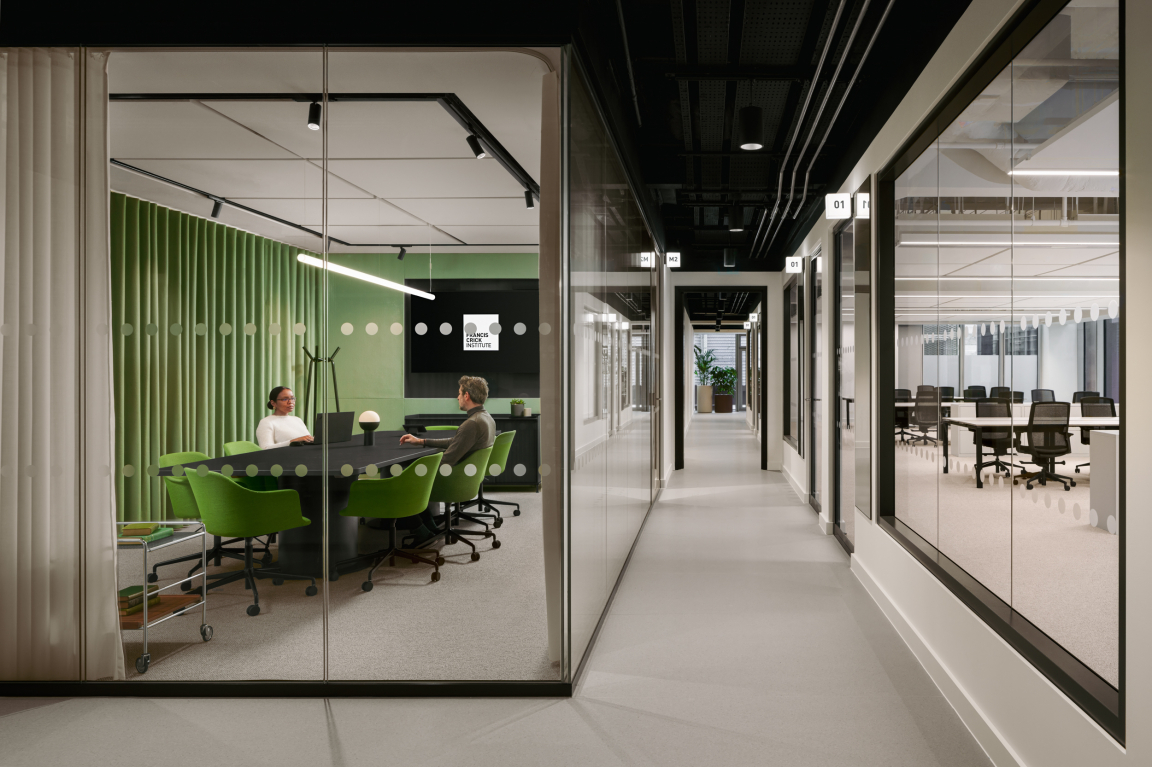
Francis Crick Institute at 20 Triton Street. Photo credit: Vigo Jansons
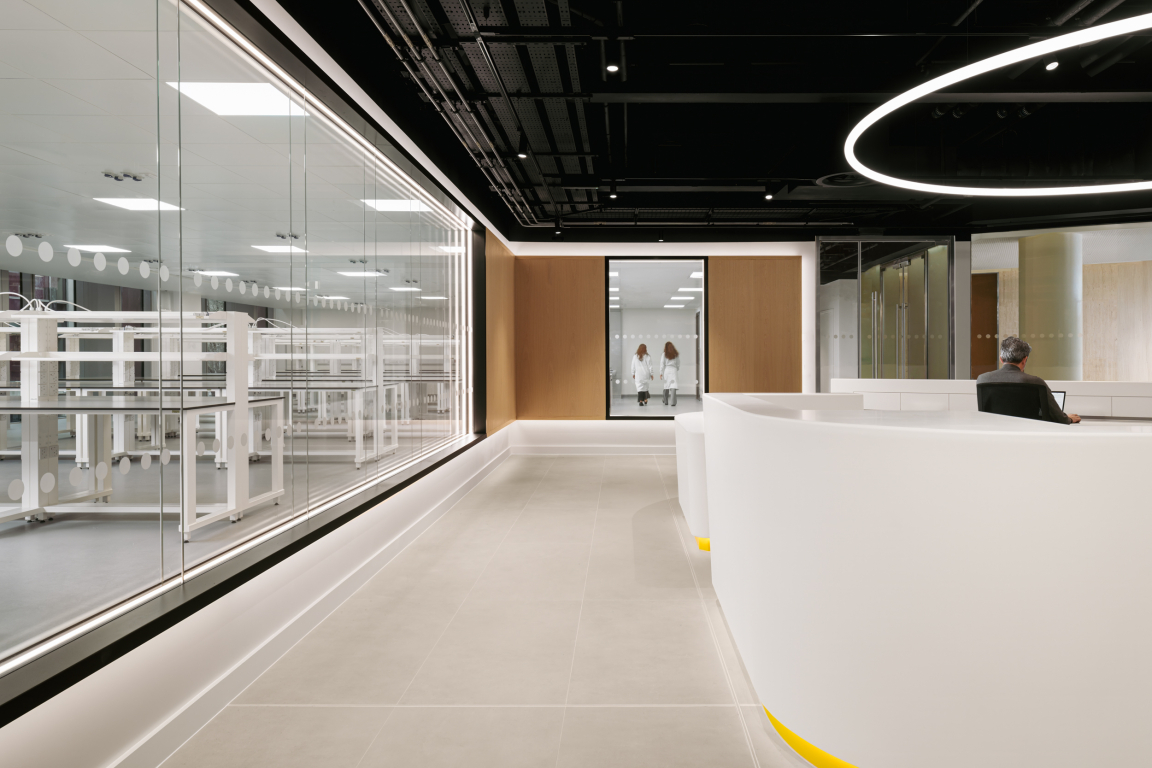
Francis Crick Institute at 20 Triton Street. Photo credit: Vigo Jansons
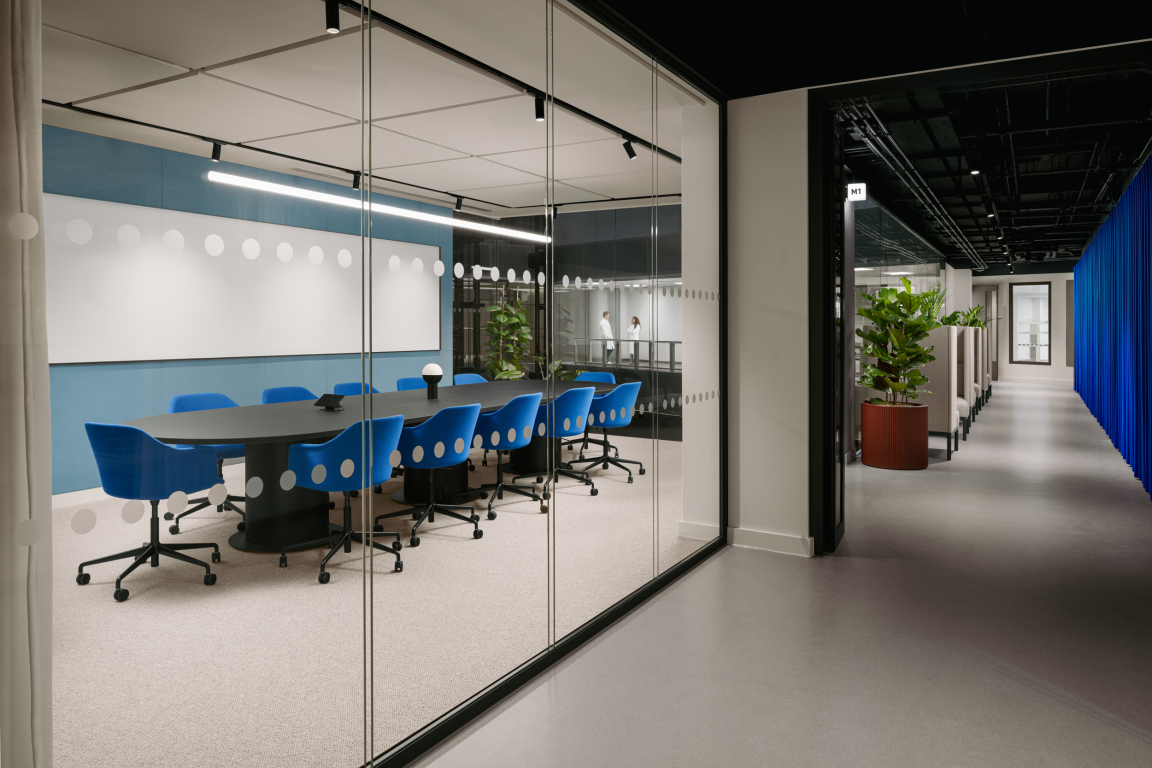
Francis Crick Institute at 20 Triton Street. Photo credit: Vigo Jansons
Does it jar with other things like EDI?
"The two should go hand in hand. We care deeply about creating spaces where people feel comfortable, included and respected.
"It’s no longer good enough to design some spaces that are ‘accessible’."
"We’d rather find ways to create spaces that are equally inclusive without making anyone feel like the odd one out."
Are there any product or material innovations you're particularly inspired by right now? Perhaps bio-based/renewable?
"There is a ton of interesting new materials and construction processes that are being introduced to the A&D community. We are experimenting with bio-based materials such as mycelium acoustic panels, fully recycled plastic furniture as well as bio-based resins to create new innovative surfaces... This is a small portion of some amazing products coming to market."
What are you currently working on?
"In our workplace interiors studio, we’re working on a diverse set of projects from end-user technology and life sciences clients, to new-build amenities with developers and architects. We also have brand designers, workplace strategists and climate action specialists within our studio. The cross collaboration of sectors and disciplines is so refreshing to me as a designer."
And what's next?
"Personally, I’d like to explore how we as designers can really innovate through practising new design processes and experimenting with communication tools that enable us to better co-create with our clients and partners.
"I’d love to see how we can increase both the speed, efficiency and quality of what we produce using better tools. I feel the conversation is shifting from sustainable and resilient design as a focus, purely because this is now a baseline in what we do, and is moving towards experiential, human-centric, science-based innovation in design."


